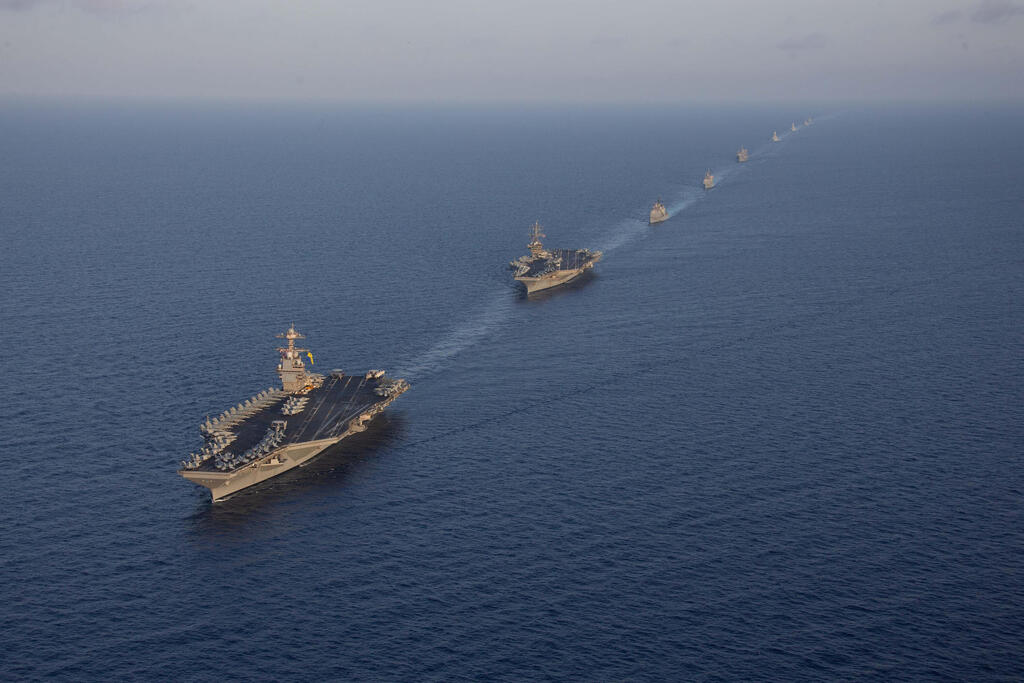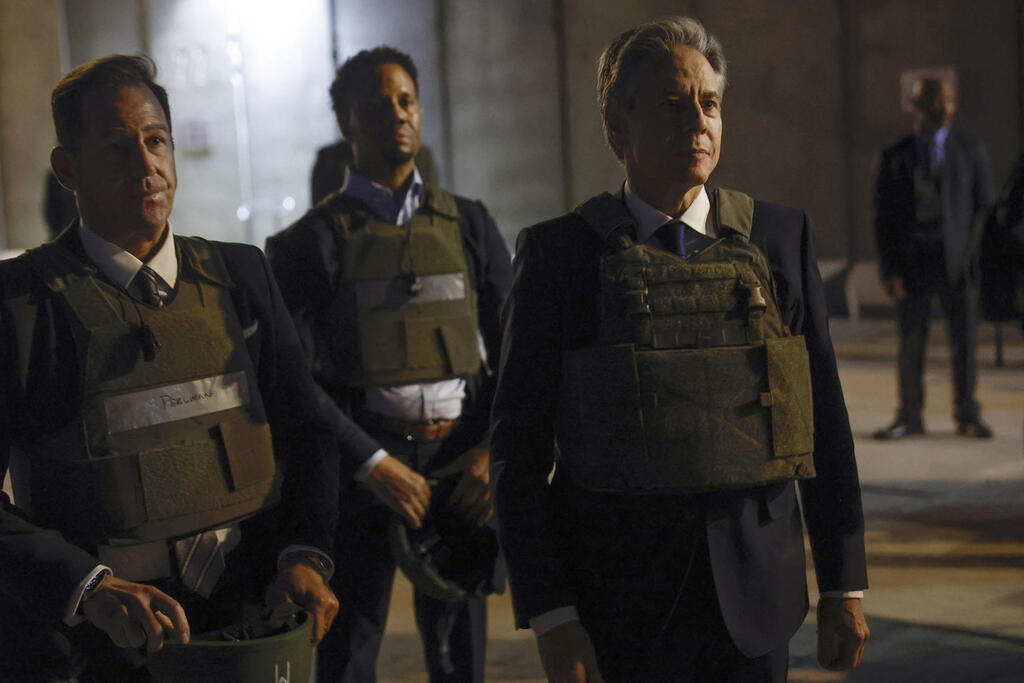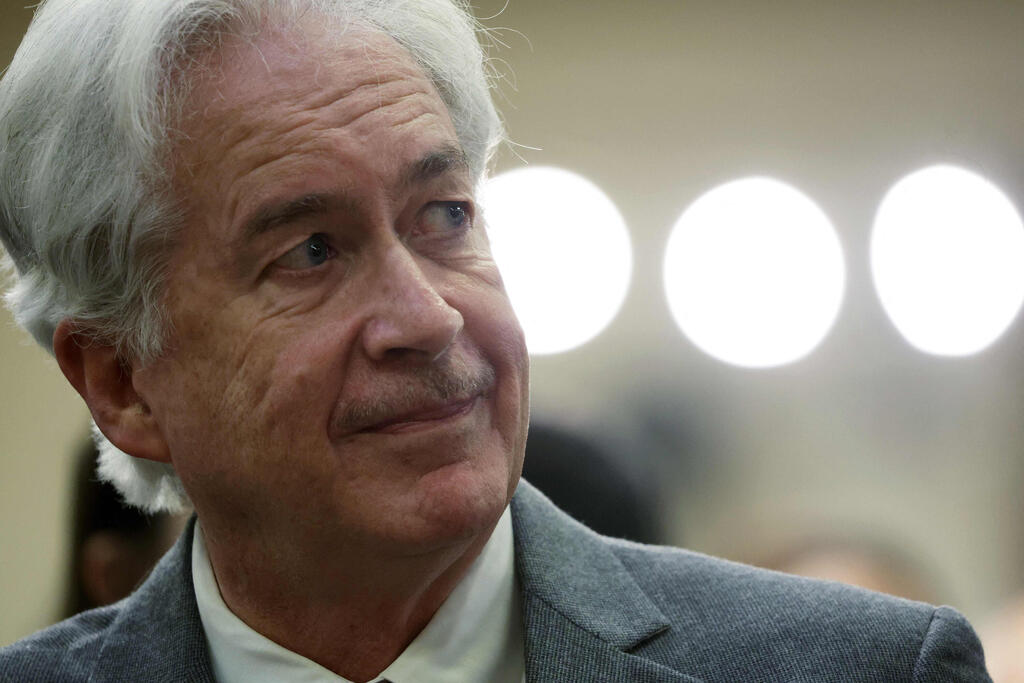The Pentagon announced that one of its nuclear submarines arrived Sunday in the U.S. Central Command area of responsibility, which covers the Middle East.
Read more:
The unusual announcement is perceived as yet another deterring signal from the U.S. to Iran and its allies in the region, aiming to prevent them from rallying to Hamas's aid in the war against Israel and from expanding the conflict to additional fronts.
The U.S. has already deployed two aircraft carriers to the Middle East – USS Gerald R. Ford, which arrived in the eastern Mediterranean early in the war, and USS Dwight D. Eisenhower last weekend – along with additional warships, including one that helped intercept some of the missile and drone attacks launched by the Houthis in Yemen toward Israel over the Red Sea last month. As a further deterrence, last week the two aircraft carriers sent to the region, along with their strike groups, conducted a joint exercise.
In his speech last Friday, Hezbollah Secretary-General Hassan Nasrallah addressed the American naval presence in the Mediterranean, claiming, "The U.S. ships do not scare us. We are well-prepared for them as well."
The U.S. has a total of 18 Ohio-class submarines, which are nuclear-powered. Fourteen of these carry Trident ballistic missiles equipped with nuclear warheads and serve as a part of the U.S. nuclear deterrent force. The remaining four submarines in this class are armed with Tomahawk cruise missiles. It has not been disclosed which type of submarine was sent to the region.
Ohio-class submarines are the largest in the U.S. fleet, with each weighing approximately 18,750 tons, ranking them third largest in the world, after two classes of Russian submarines: the Typhoon class (48,000 tons) and the Borei class (24,000 tons).
3 View gallery


US Navy Aircraft carriers USS Gerald R. Ford (first) and USS Dwight D. Eisenhower (second)
(Photo: AFP PHOTO / US Department of Defense/US Navy/Mass Communication Specialist 2nd Class Jacob Mattingly)
Military analysts highlight that this is an extraordinary announcement from the Pentagon. “It’s not just that this type of submarine is there. It’s that the US military announced one of its most secretive weapons assets is now in the region. It’s as public as the message gets even with no specific location details,” Barbara Starr, who has served for many years as CNN’s military correspondent, posted on X.
The United States is beefing up its military presence in the Middle East, also in response to the increasing attacks against its bases in the region, attacks which have led President Joe Biden to order retaliatory strikes against Iranian Revolutionary Guard weapon depots in Syria.
The U.S. has warned that if the attacks by pro-Iranian militias continue, it is prepared to respond with additional bombings. This issue was addressed Sunday night by U.S. Secretary of State Antony Blinken, who made an unannounced visit to Iraq – where bases hosting U.S. forces have been attacked.
Following a meeting with Iraqi Prime Minister Mohammed Mohammed al-Sudani, Blinken told reporters that he made it clear to him that the attacks against American forces in Iraq and the Middle East are unacceptable.
In the shadow of those pro-Iranian militia attacks, Blinken was photographed donning a ballistic vest during the visit. He visited the U.S. embassy in Baghdad and met with the Iraqi prime minister for over an hour.
Blinken also addressed in his remarks the pressure the Biden administration is exerting on Israel to promote a "pause" in the Gaza Strip – in order to facilitate the transfer of humanitarian aid to Palestinian civilians and to secure a deal for the release of the hostages.
He described it as a "process" and said that U.S. and Israeli teams are currently discussing the specific details of the initiative. He noted that Israel has raised “important questions” about how the humanitarian pauses will be managed and that the teams were working to address these questions.
The U.S. secretary of state arrived in Iraq after his meeting Sunday with Palestinian Authority Chairman Mahmoud Abbas in Ramallah. He also visited Jordan and Cyprus, and from Iraq, he continued to Turkey Sunday night.
Another senior American official touring the region is CIA Director William Burns, who landed in Israel Sunday and met with Mossad chief Dvvid Barnea. On Monday, Burns is scheduled to meet with Prime Minister Benjamin Netanyahu and likely participate in a discussion with members of the war Cabinet.
Burns will also visit Egypt, Qatar and the United Arab Emirates later, discussing U.S. efforts to prevent the war from spilling over to additional fronts, as well as efforts to advance a deal for the release of hostages.





